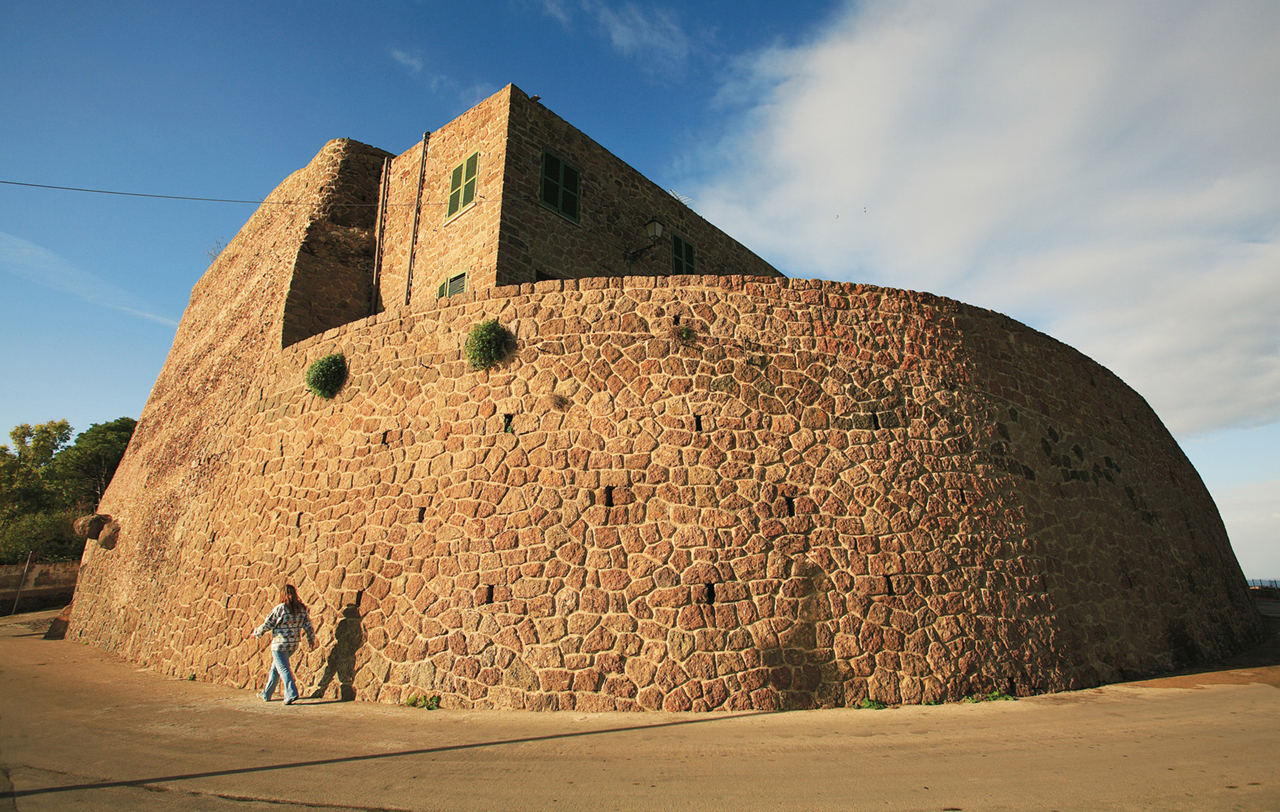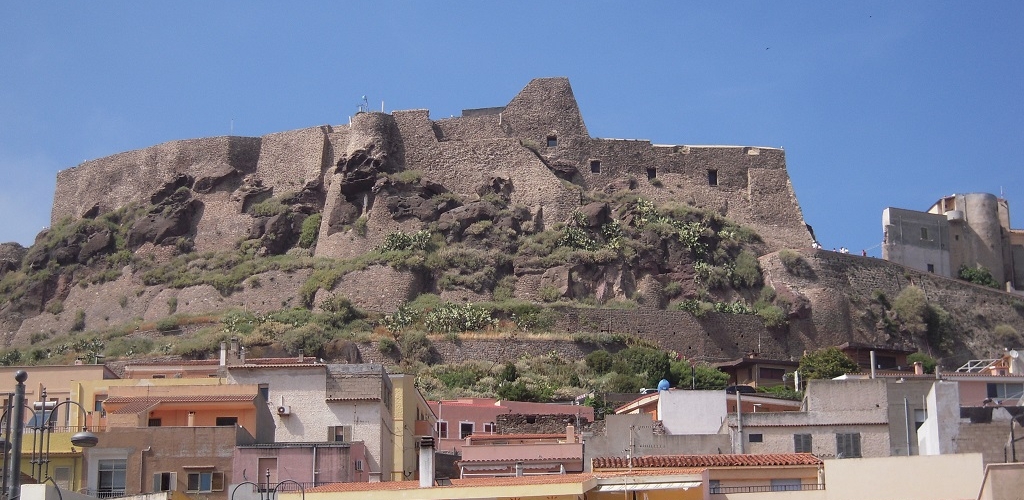Castle in Castelsardo: the Doria Castle, the Museum and the Borgo.
In the heart of the north-west Sardinia, overlooking the Gulf of Asinara, rises the majestic Doria Castlesymbol of Castelsardo and witness to centuries of history, art and tradition. This imposing fortress dominates the suburb and the seagiving those who visit it a panorama unique and an experience that combines culture, architecture and breathtaking landscapes. This article will take you on a discovery of the castle of Castelsardoof its origins medievallegends linked to the noble family Doria and its current role as the seat of the Museum of Mediterranean Interweavingone of the most fascinating museums craftsmen of the region. Read it and you will discover why this destination is a stopover unmissable for anyone wishing to explore the Sardinia historical and cultural.

Where it is and why to visit
The castle is located in the province of Sassarion top of a hill which domina the village of Castelsardo and the sea below. This position strategic gave it a key role in the medieval periodwhen it controlled the sea routes and protected the territory from external incursions. The town that develops at its foot still retains an authentic charm, with narrow alleys and sand-coloured houses reflecting the bright light of the Mediterranean.
La visit at the castle is a complete experience: not only does it offer an immersion in history, but it also gives a panoramic view on sea and on the coast. Inside the castle there is in fact a complex museum of great importancecapable of narrating the tradition local and the history of the place.
The history and origins of the Doria Castle
The medieval castle was built by the noble family Doriaoriginally from Liguria, in the 13th century. Initially it had a function defensivewith walls solid, a tower guard and a bastion facing the sea. Over time, it came under several dominions, including the Aragonese and subsequently that Sardinianalso becoming a castel aragonese during the domain Iberian.
The castle was then remodelled at various times, but preserves a large part of its original structure, making it a rare example of architectural military medieval at Sardinia. Some historical sources tell of links with famous figures such as Brancaleone Doria and Eleonora d'Arborea, who would influence its fate.
Architecture and defensive structure
La structure of the castle is imposing and perfectly integrated with the rock on which it was built. Its walls e towers are designed to withstand assaults, while a steep ramp access leads to the main entrance. This element defensive was essential to ensure that the inhabitants were protected in the event of an attack.
The castle is organised in several exhibition halls and inner courtyards, with a distribution of space typical of the constructions fortifications of the medieval period. Today, the tour winds its way through rooms that once housed soldiers and warehouses and now hold valuable historical evidence.

The Museum of Mediterranean Interweaving
Today the castle of Castelsardo è headquarters of the famous Museum of Mediterranean Interweavingone of the most important cultural centres dedicated to the art of weaving and braiding. This museum celebrates the tradition Sardinian craftsmanship and Mediterraneanexhibiting artefacts made from natural materials such as dwarf palm, reed and cane.
La exhibition permanent is divided into several hallswhere it is possible to admire baskets, chairs, utensils and decorative works that tell of the daily life and ingenuity of local communities. This . is not just a point of reference culturalbut also a tribute to manual skills and creativity handed down over the centuries.
A village nestled between history and the sea
The suburb by Castelsardo is considered one of the most beautiful in the Sardinia. Its narrow streets climb towards the top where the castle stands, offering glimpses evocative on sea and on the gulf. The houses, built of local stone, are perfectly harmonised with the landscape, creating a unique sight for those arriving from the sea or the coast.
Walking through the alleys means discovering workshops, small squares and viewpoints that reveal the deep connection between the community and its fortress. This link is also evident during the festivities dedicated to Saint Anthony Abbotpatron of the cathedral citizen.
The link with the sea and the Mediterranean
The sea has always been an integral part of life at Castelsardo. The position on the Mediterranean ensured not only defence, but also trade and cultural exchange with other coastal communities. This contributed to making the village a crossroads of influences Ligurians, genovesi, Aragonese e sardines.
La panoramic view from the castle embraces the Gulf of Asinarawith its clear waters and jagged coastline. On a clear day, the panorama extends as far as the inland mountains of the region.
The cultural role today
Today the castle is a centre cultural of primary importance at Sardiniaattracting thousands of visitors every year. It is not only a place of remembrance, but also a meeting point for events, temporary exhibitions and initiatives dedicated to the promotion of art and the tradition craftsmanship.
La headquarters museum and the context architectural make each visit an experience that combines knowledge and wonder, combining the fascination of history with the beauty of the landscape.
Curiosities and legends
Among the curiosities linked to the castle, it is said that during the medieval period secret rooms were used to hide valuables and important documents of the possession. Other stories tell of underground tunnels that connected the fortress to the sea, allowing quick escapes in case of siege.
Another legend concerns a mysterious treasure chest of the Doriawhich, according to some, is still hidden somewhere inside the castle.
FAQ
1. Where is the Doria Castle located?
It is located in the village of Castelsardoin the province of Sassariin the north-west Sardinia.
2. Who built the Castle of Castelsardo?
It was built in 13th century from noble family Doriaoriginally from Liguria.
3. What does the Doria Castle house today?
It hosts the Museum of Mediterranean Interweavingdedicated to the tradition local craftsmanship.
4. What was the original function of the castle?
It was a fortress with functions defensive to control the sea and protect the village.
5. What can you see inside the castle?
You can visit the exhibition hallsadmire handicrafts and enjoy a panoramic view.
6. Is the castle accessible all year round?
Yes, but opening hours may vary depending on the season.
7. How long does it take to visit Castelsardo Castle?
On average, one visit complete takes about an hour.
8. What attractions are close to the castle?
The suburb by Castelsardo, the cathedral of Sant'Antonio Abate and the beaches of the Gulf of Asinara.
9. Why is the Doria Castle famous?
For his importance historical, the position strategic and its function as cultural centre.
10. Is it possible to see the sunset from the castle?
Yes, and it is a spectacle evocative with the sun descending on the Mediterranean.

